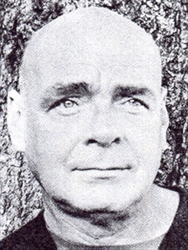

And at no time of year is this more true than at Christmas. Central to that book, and the Harold series, is the idea that a child is the very much the centre of his own world. The plot involves a four-year-old named Harold who uses his purple crayon and imagination to go on many adventures. And Johnson and Krauss played a key part in helping him develop perhaps the most revolutionary picture book of all, Where the Wild Things Are. Harold and the Purple Crayon is based on Crockett Johnson's book for children. He talks in this fascinating interview about how ‘Ruth and Dave’ (Crockett) supported his creation of real, funny looking kids. The couple took him under their wing and ‘apprenticed’ Sendak, working together on many books. Sendak was discovered by Crockett Johnson’s wife Ruth Krauss in the early 1950s when he was a failing illustrator, dressing toy shop windows. Not to teach there are no lessons in “Harold.” You have fun, you do what you like and no one’s going to punish you. It comes out of the same theory: Let the kid do his own thing. There are no adults to demonstrate or remonstrate. ‘But, also, Harold does exactly as he pleases. ‘Harold is just immense fun that’s all, just fun.’ Crockett’s friend, Maurice Sendak said. Until he finally gets his Christmas tree, with no need for a fairy on the top. He draws some reindeer, very much without red noses. Along the way he creates all the conditions necessary for Santa Claus to bring presents down his yet to be drawn chimney.Īlong the way Harold creates a snow storm and a downcast snowman. In Harold at the North Pole our hero goes on a journey north in search of a Christmas tree. These deceptively simple stories follow a small snub nosed child in a romper suit around a blank background which he brings to life with line drawings from his ever present purple crayon. Crockett Johnson was a New York cartoonist and children’s book creator best remembered for his classic 1950s books about Harold and the Purple Crayon.


 0 kommentar(er)
0 kommentar(er)
